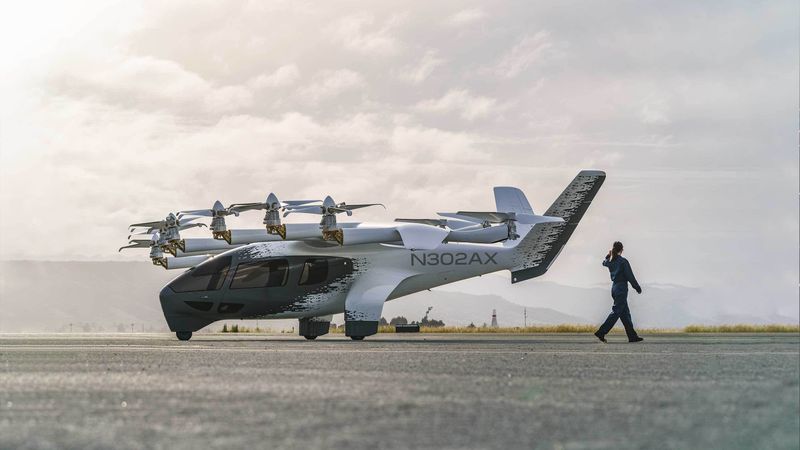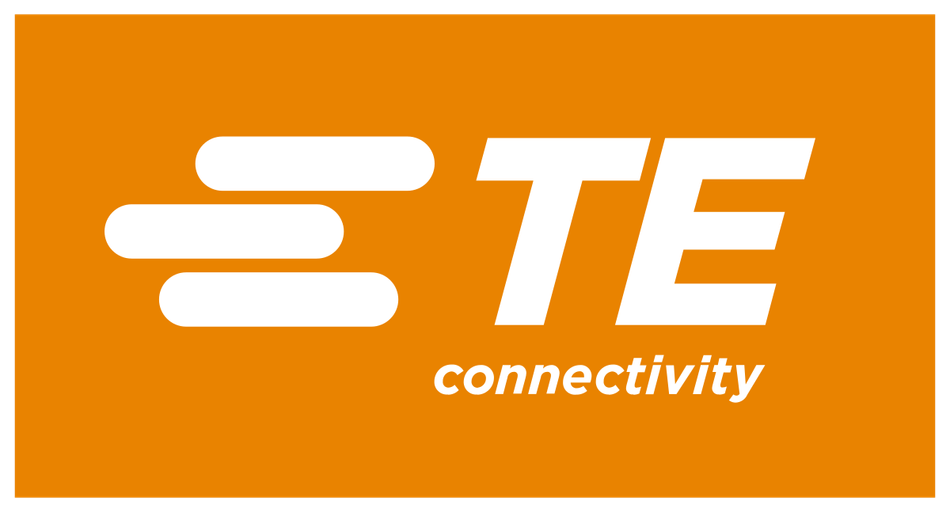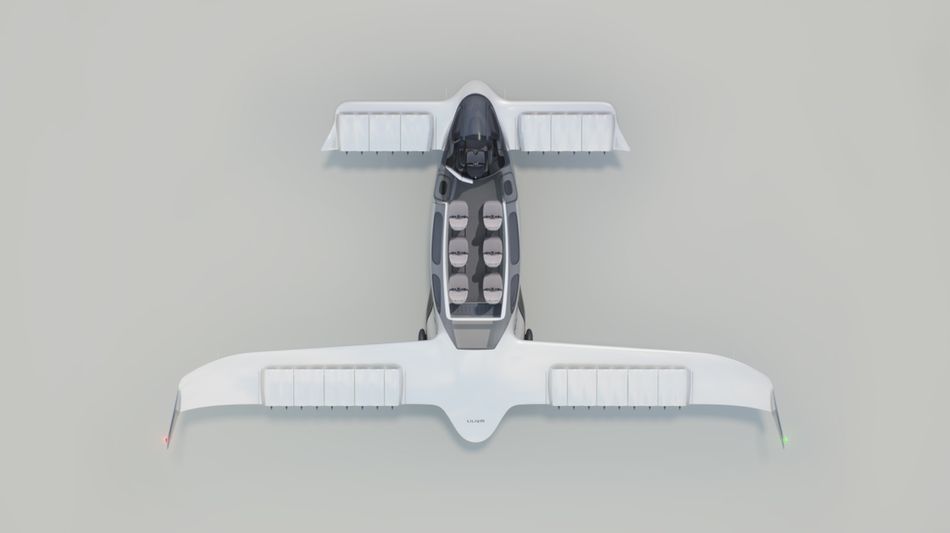Urban Air Mobility Takes Off
Exploring the potential of Urban Air Mobility (UAM) and electric Vertical Take-Off and Landing (eVTOL) vehicles in transforming urban transportation

Image credit: Archer
Urban Air Mobility (UAM) represents a transformative approach to city transportation, leveraging aircraft such as air taxis and drones. This concept is increasingly recognized globally, with countries like the United States, Germany, and Japan actively developing UAM initiatives. The primary goal of UAM is to establish safe, efficient city travel and cargo delivery using small aircraft, thus redefining urban transportation systems.
Electric vertical take-off and landing (eVTOL) vehicles are central to the advancements in UAM technologies. These vehicles are gaining popularity due to their environmental benefits and efficiency. Key players in the aviation industry, such as Airbus and Volocopter, are investing in eVTOL air taxis for urban passenger transport. Integrating advanced air traffic management systems is crucial to accommodate the increasing number of UAM aircraft and ensure safe operations within existing airspace1.
Understanding UAM
What Is UAM?
UAM is a transportation technology designed for urban areas, utilizing low-altitude aircraft for moving passengers or cargo. This system can include both human-piloted and autonomous aircraft. UAM encompasses various types of vehicles, such as advanced air mobility (AAM) aircraft, autonomous aerial vehicles (AAV), unmanned aerial vehicles (UAV), personal aerial vehicles (PAV), and eVTOL vehicles. eVTOLs, being electrically powered, are integral to UAM and enable vertical take-offs and landings, distinguishing them from conventional helicopters2.
Global Trends and Urbanization
The growing urban population, with an estimated 68% of people residing in cities by 2050, places increasing demands on urban transportation infrastructure. In this context, UAM offers a three-dimensional transportation solution, potentially alleviating ground traffic congestion using air space. UAM's ability to provide mobility as a service (MaaS) through electric air taxis is particularly suited for dense urban environments.
However, studies indicate mixed outcomes for UAM implementation. While UAM introduces innovative on-demand transport possibilities, its integration into existing urban environments may only lead to significant time savings in some cases. For instance, a study conducted in Munich and surrounding areas showed that switching to UAM might not considerably reduce travel times or distances traveled by car. Nevertheless, the potential of UAM to revolutionize urban mobility remains significant, with a predicted substantial increase in the number of passenger drones in European skies by 20502. This surge necessitates the parallel development of unmanned air traffic management systems for safety and efficiency.
Technological Innovations in UAM and eVTOL
Key Industry Players: Companies and Regulatory Bodies Shaping UAM
In the emerging UAM landscape, several key players significantly influence the industry's direction. Among them, Embraer subsidiary Eve Air Mobility is making notable inroads, particularly in Australia, where it has established partnerships with Nautilus Aviation in Queensland, Sydney Seaplanes in New South Wales, and Microflite in Victoria. Eve's approach to eVTOLs focuses on electrical power, offering advantages such as reduced noise and zero local emissions, making UAM more accessible and environmentally friendly.
The support of Embraer, a leading aircraft manufacturer with extensive experience in aerospace engineering, safety, and intellectual property, underpins Eve Air Mobility's advancements. This backing is crucial in meeting the high safety standards demanded by various global regulatory authorities, ensuring that eVTOL and UAM solutions are sustainably and safely scaled in the market.
On the regulatory side, organizations like the US Federal Aviation Administration (FAA) and the European Union Aviation Safety Agency (EASA) play critical roles. These bodies are actively engaged in monitoring UAM developments and are working to establish regulatory frameworks that safely integrate UAM operations into existing airspace. This involves setting standards and guidelines to manage the unique challenges posed by UAM, such as air traffic control for low-altitude urban flights and ensuring the safety of autonomous and piloted eVTOL aircraft in densely populated areas.
The collaboration between innovative companies like Eve Air Mobility and regulatory bodies is crucial for the successful implementation and growth of UAM. Such partnerships ensure that the technological advancements in eVTOLs are complemented by appropriate regulatory measures, paving the way for a future where UAM is a safe, efficient, and commonplace mode of transportation in urban environments.
Challenges in UAM Adoption: Regulatory, Safety, and Social Barriers
Adopting UAM faces several significant challenges, primarily in regulatory, safety, and social domains.
Regulatory Challenges
The regulatory environment for UAM and flying cars is still evolving. A primary challenge lies in the certification of vehicles by local authorities, which may be civil or military. The lack of a cohesive set of rules fitting these new technologies means that countries must either establish new regulations or adapt existing ones. This process ensures that UAM aircraft meet stringent safety standards and are compatible with current air traffic management systems. Given the novelty of UAM technologies, regulatory bodies face the complex task of framing guidelines that adequately address the unique aspects of low-altitude urban flights, including air traffic control and integration into existing airspace.2
Safety Standards
Safety is a paramount concern in the large-scale deployment of UAM. This includes not only the physical safety of the aircraft but also the development of systems with redundancy in powering sources and ballistic parachute systems for emergencies. The challenge is ensuring these aircraft can operate safely in densely populated urban areas without harming people or property. The high safety standards demanded for UAM aircraft require advanced technological solutions and rigorous testing procedures to minimize the risk of uncontrolled failures.2
Social Resistance
UAM faces social barriers, including privacy concerns, community acceptance, and the perception of safety and security. The operation of UAM vehicles at low altitudes over urban areas raises concerns about privacy and noise pollution. Gaining public trust and acceptance is crucial for successfully integrating UAM into daily life. This involves addressing concerns about the environmental impact, noise levels, and the visual footprint of UAM infrastructure like vertiports. Research into societal perceptions of UAM is essential to understand these barriers and develop strategies to mitigate potential concerns. It's important to balance commercial interests and technological innovation with the public good, ensuring that UAM solutions are technologically feasible, socially acceptable, and inclusive.3
The Potential and Vision of UAM
UAM's Vision for Urban Transportation: Integrated Mobility and Environmental Sustainability
UAM embodies a transformative vision for urban transportation, aiming to enhance mobility while adhering to principles of environmental sustainability. The UAM concept envisions a future where special aircraft, notably eVTOLs, integrate seamlessly into city life, offering rapid transit solutions without contributing to air pollution. This vision promotes "integrated mobility," a concept that facilitates a seamless transition between different modes of transportation, including regular cars, air taxis, and public transit. The goal is to provide convenience and foster cleaner and more sustainable urban environments.1
Recent developments in the Future Air Mobility (FAM) industry, which includes UAM, have shown considerable momentum. The industry has progressed from early-stage concepts to tangible prototypes and manufacturing facilities. In 2022 alone, companies like Archer Aviation, BETA Technologies, Aviation, Joby Aviation, Lilium, and Volocopter achieved significant flight hours testing their aircraft. This progress signifies a shift towards a more integrated, efficient urban mobility solution prioritizing environmental considerations such as zero emissions and reduced noise levels.2
Regulatory advancements have also been noteworthy. In 2022, regulatory bodies like the FAA and EASA made progress in creating frameworks to accommodate these new forms of air mobility. These efforts ensure that UAM integrates safely and efficiently into existing urban and aviation ecosystems, aligning with broader sustainability goals while addressing the complex challenges of urban air traffic management and vehicle certification.3
Opportunities and Benefits of UAM: Advantages Over Traditional Transportation Methods
UAM offers several advantages over traditional transportation methods, reshaping urban travel dynamics. A key benefit is the ability to provide faster, more efficient transportation, particularly in congested urban areas. UAM is designed to significantly reduce traffic congestion, improve air quality, and offer seamless transportation options. Using eVTOLs, a central component of UAM, introduces quieter, cleaner options for personal transport over short distances, which could greatly alleviate urban traffic issues.1,5
In 2022, the industry saw a surge in interest and investment, indicating a strong demand for these new modes of transportation. Approximately 6,700 UAM-related orders were placed, representing a value of $45 billion.7 This demand came from various stakeholders, including airlines, aircraft charter companies, and leasing companies. The development of tangible prototypes and manufacturing facilities, with companies like Archer Aviation, BETA Technologies, and Joby Aviation leading the way, has further demonstrated the industry's commitment to bringing these solutions to market.
Regulatory progress has also been notable. Authorities such as the FAA and EASA are creating new frameworks to accommodate UAM. These developments are essential for integrating UAM into existing transportation systems safely and efficiently. The progress on the regulatory front is crucial in ensuring that UAM solutions are not only technologically advanced but also safe and compliant with global standards.7
Conclusion
UAM is evolving rapidly, with significant strides in eVTOL technology, indicating a transformative future for urban transportation. Current progress shows a shift from conceptual models to tangible prototypes, backed by substantial investments and regulatory developments from bodies like the FAA and EASA. eVTOLs, integral to UAM, offer environmentally friendly, efficient, and quieter alternatives to conventional transport, aiming to alleviate urban congestion and reduce pollution. The success of UAM hinges on technological advancements, regulatory support, and public acceptance, positioning it as a pivotal element in future urban mobility solutions.
TE Connectivity: Bring Unmanned Vehicles with Power (UMP) Connector Kits
TE Connectivity's (TE) Unmanned Power (UMP) Connector Kits provide a reliable contact interface that safely delivers power or power/signals to various parts of unmanned vehicles. These connectors offer up to 80A per contact and are available as power or mixed signal/power connectors. The UMP connectors are provided with the mating pair of connectors (both plug and receptacles). The connector kits are manufactured with stronger materials proven in harsh environments and reliable contact interfaces while considering weight and density. These connector kits can be sealed in wire-to-wire format for added environmental protection. The TE UMP connector kits can be used in high power in small form factor requirements. Typical applications include unmanned vehicles, ground defense, robotics, and factory automation. Learn more here.
Mouser Electronics sponsored this content in partnership with TE Connectivity.


